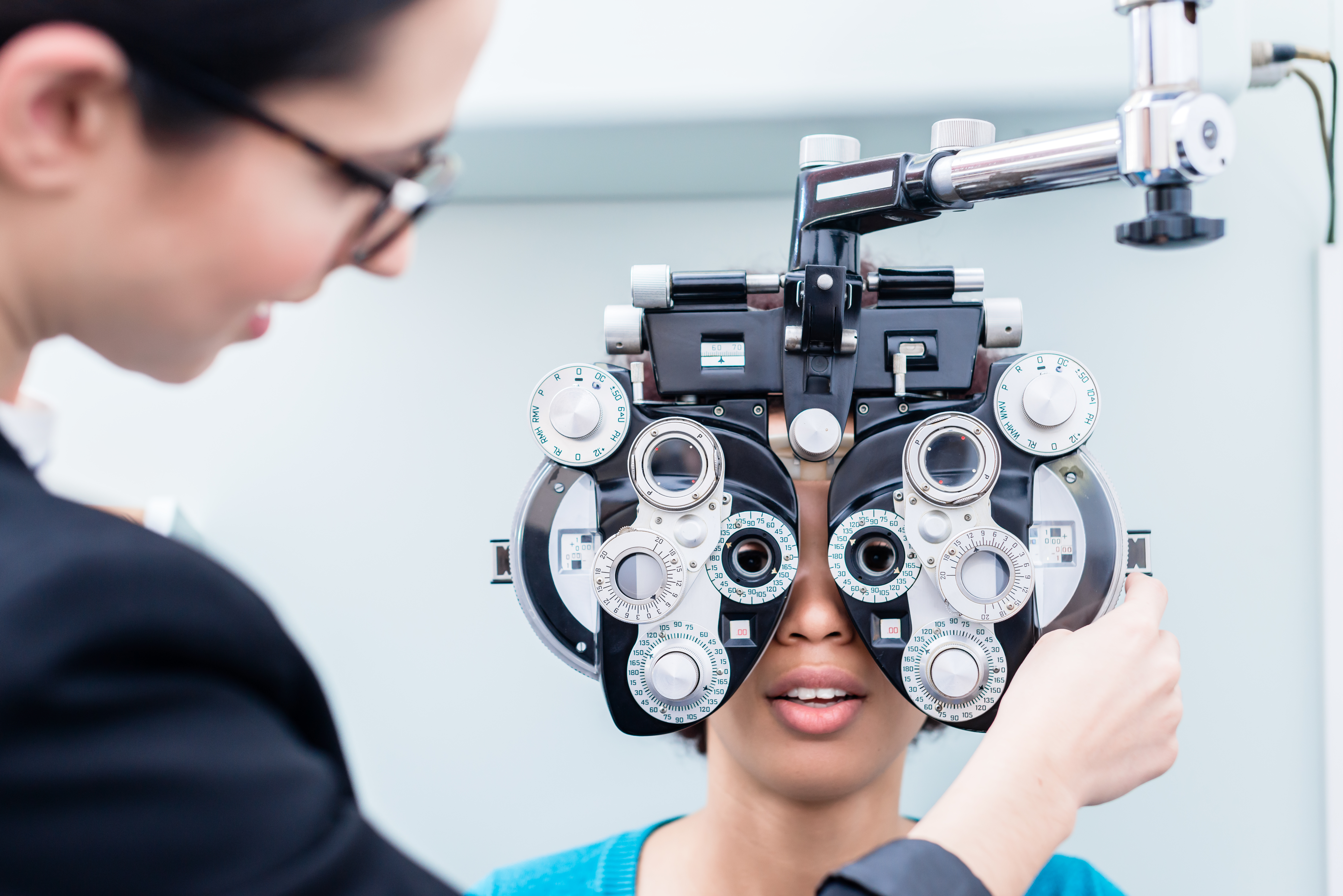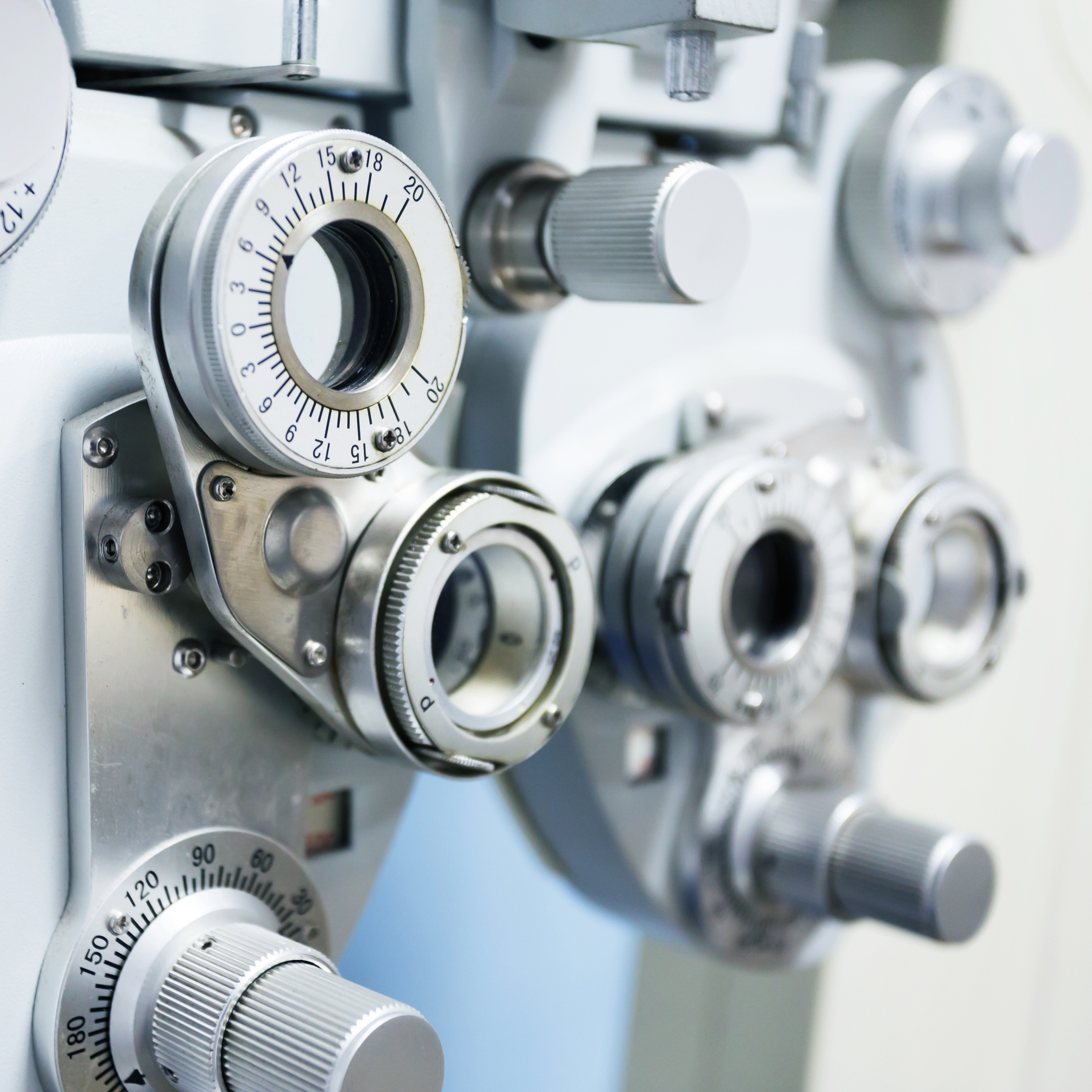
“Which is clearer, one or two?” It still amazes me that this simple question can lead to a great prescription allowing sharp vision for all patients. Personally, answering this question as a kid allowed me to watch cartoons from the couch instead of at three feet! After my first pair of glasses, I knew that I wanted to help people improve and maintain healthy vision. I became more curious about the profession of optometry and wanted to learn more from my optometrist at my next annual exam. I discovered that the couple who owned the private practice I went to as a patient graduated from the University of Houston College of Optometry (UHCO). I now had a new dream – to attend UHCO and become an optometrist. Fifteen years later, that dream came true. I am in the second semester of my first year of optometry school, and I finally understand what “1 or 2?” means. I was so excited when I saw that we were learning manifest refraction in lab. For the optometry student learning the same procedure or practicing for the competency test, here is a simplified version of what I learned that day.
- Retinoscopy: Retinoscopy is a technique used to estimate an objective starting point for the spectacle prescription. Learn this now for competency tests, for boards (NBEO), vision screenings, pediatric exams, and special cases in the future. Otherwise, you will most likely be using an autorefractor or a previous prescription to start manifest refraction.
- Determine sphere power starting point: During manifest refraction, we manipulate what we call the interval of Sturm to get the Circle of Least Confusion on the retina. Basically, if Step 1 was not perfect (which most of the time it is not), we try to adjust the prescription and find the least amount of blur with the least amount of minus power. One major point that our professors emphasized throughout the lab is to never over-minus a patient!
- JCC to refine axis and power: Two major points here: “1 or 2?” and astigmatism. The majority of people have astigmatism, and almost everyone thinks it is more serious than it is. With astigmatism, the eye is not perfectly spherical and will focus light at two points in the eye instead of one. The aspherical corneal shape will result in a blurry image. We correct this with minus and plus cylinder lenses in the Jackson Cross Cylinder (JCC). “1 or 2?” shows the patient both options of cylinder lenses. Here, we get more of a subjective prescription because it is dependent on the patient’s responses.
- Monocular subjective sphere: We are done with cylinder power and back to sphere power. The goal again is to find the prescription with the least amount of blur and the least amount of minus power, but this time it is subjective.
- Binocular balance: Steps 1-4 are monocular (one eye at a time), and now we perform binocular (both eyes together) procedures if the patient’s visual acuity is relatively similar in both eyes. In Step 4, there is a possibility that one eye focused more than the other. We do not want this! Binocular balance ensures that both eyes will have equally clear images projected onto the retina. If a patient’s prescription is unbalanced, this may result in asthenopia, central suppression of the eye with more blur, reduced stereoacuity (depth perception), etc. Binocular balance can be done using the Risley Prism method or the duochrome (red-green) test.
- Binocular subjective sphere: The final sphere determination for the prescription! Now that we are binocularly balanced, we must find the subjective sphere power. This last step is the same as Step 4, but binocular instead of monocular. The endpoint of manifest refraction is when adding +0.25 DS to both eyes results in a slight blur of the patient’s best visual acuity. An addition of -0.25 DS will result in little effect or causes the letters to look darker and smaller.

After completing my first manifest refraction on a classmate, we were both happily surprised that his best corrected visual acuity was 20/20. This process is a self-correcting art. If Step 1 is not perfect, then Steps 2-6 will fix errors to result in the correct prescription. Manifest refraction and especially prescribing for astigmatism are major components of optometry. This is what I have been waiting forever since my first visit to the optometrist. I finally got to say the phrase, “Which is clearer, one or two?”

